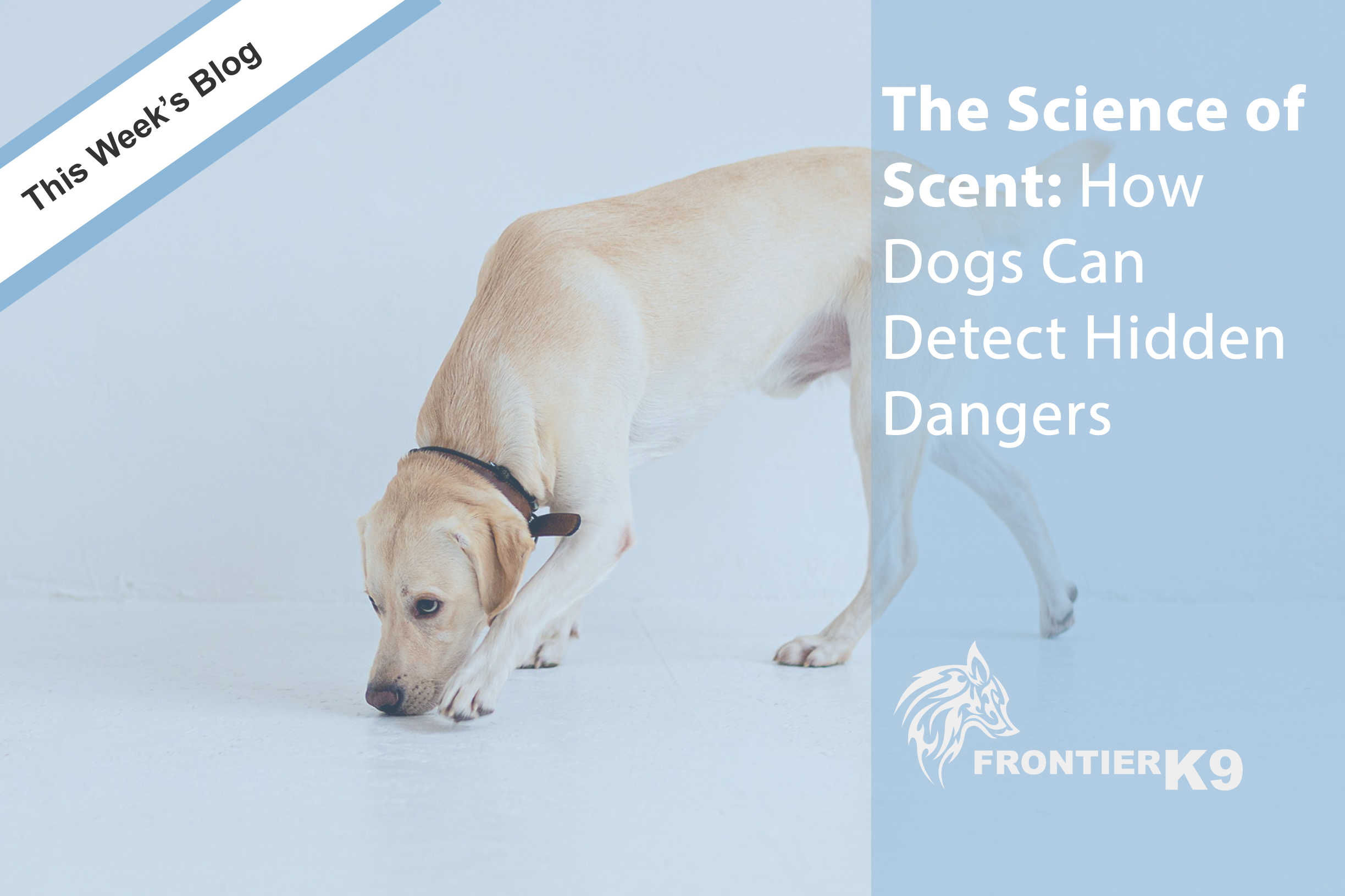Dogs are often celebrated for their loyalty and companionship, but one of their most incredible traits is their unparalleled sense of smell. In fact, a dog’s sense of smell is so advanced that it can be up to 100,000 times more sensitive than humans’. This extraordinary ability allows dogs to detect hidden dangers that would be impossible for us to uncover on our own.
From detecting drugs and explosives to locating missing persons and even detecting medical conditions like cancer, the science behind how dogs use their sense of smell is truly fascinating. Here’s a deeper look at how dogs’ noses work and how they can help keep us safe.
How Dogs’ Sense of Smell Works
A dog’s nose is a marvel of nature. While humans have approximately 5 million scent receptors in their noses, dogs boast a staggering 300 million. This huge number of receptors allows them to detect even the faintest traces of scent. But it’s not just the number of receptors that make a dog’s sense of smell so powerful – it’s also the structure of their nose.
Dogs have a specialised organ called the Jacobsen’s organ, or the vomeronasal organ, which enhances their ability to detect pheromones and chemical signals. This means that dogs can not only detect the scent of something, but they can also “read” the chemical composition of that scent, providing them with even more detailed information about the source.
Scent Processing: Dogs Have a Superpower
When a dog inhales, the scent molecules travel through their nose and are processed in the olfactory bulb, a region of the brain that is dedicated to interpreting smells. But here’s where it gets really interesting: dogs also have a second, separate pathway for processing scents in a way that humans can’t even begin to comprehend. This allows them to follow a scent trail with remarkable precision, even if it’s faint or several hours old.
This is why trained dogs can detect drugs, explosives, and even human remains that have been hidden or buried. Their noses can pick up on the smallest traces of substances that are virtually undetectable to us.
Practical Applications of a Dog’s Sense of Smell
The ability of dogs to detect hidden dangers is put to use in a variety of critical fields. Here are a few examples:
1. Drug Detection
K9s have been trained to detect narcotics in airports, on people, and in vehicles. The scent of drugs, no matter how well hidden, is no match for a dog’s highly sensitive nose. Working in law enforcement or with customs officers, these K9s can sniff out drugs like cocaine, heroin, and marijuana with incredible accuracy.
2. Explosive Detection
Dogs are essential in detecting explosives and dangerous substances. In high-risk areas such as airports, government buildings, and military sites, trained dogs are deployed to sniff out hidden explosives. Their noses can detect even the faintest residue of materials used in bombs, often preventing devastating incidents before they happen.
3. Search and Rescue
In search and rescue operations, dogs are invaluable in locating missing persons. Whether it’s searching through rubble after an earthquake, a dense forest, or an open field, dogs can follow a scent trail to locate survivors. Their keen sense of smell allows them to track scents from great distances and in difficult conditions, often finding people who are otherwise unreachable.
4. Medical Detection
Beyond their work in law enforcement and rescue missions, dogs are even being trained to detect medical conditions in humans. Some dogs can detect the presence of certain cancers, low blood sugar levels in diabetics, and even impending seizures in people with epilepsy. These incredible canines can often sense the chemical changes in a person’s body long before symptoms become apparent, allowing for early intervention and treatment.
Training Dogs to Detect Dangers
Training dogs to detect dangerous substances or find missing people takes years of preparation and specialised education. K9s are trained to identify specific scents, and handlers use positive reinforcement to reward them for successfully locating the scent. This training often involves a combination of scent samples, search exercises, and the gradual introduction of increasingly difficult scenarios to simulate real-world situations.
Conclusion: The Unseen Heroes
Dogs’ ability to detect hidden dangers is nothing short of miraculous. From their incredible sense of smell to their dedication and training, working dogs are truly the unsung heroes of public safety. Their ability to sniff out danger, save lives, and protect us from harm makes them indispensable partners in law enforcement, search and rescue, and even medical detection.
Next time you see a working dog in action, take a moment to appreciate the power of their nose. These amazing animals are using their superpowers to keep us safe in ways that most people can only imagine.


